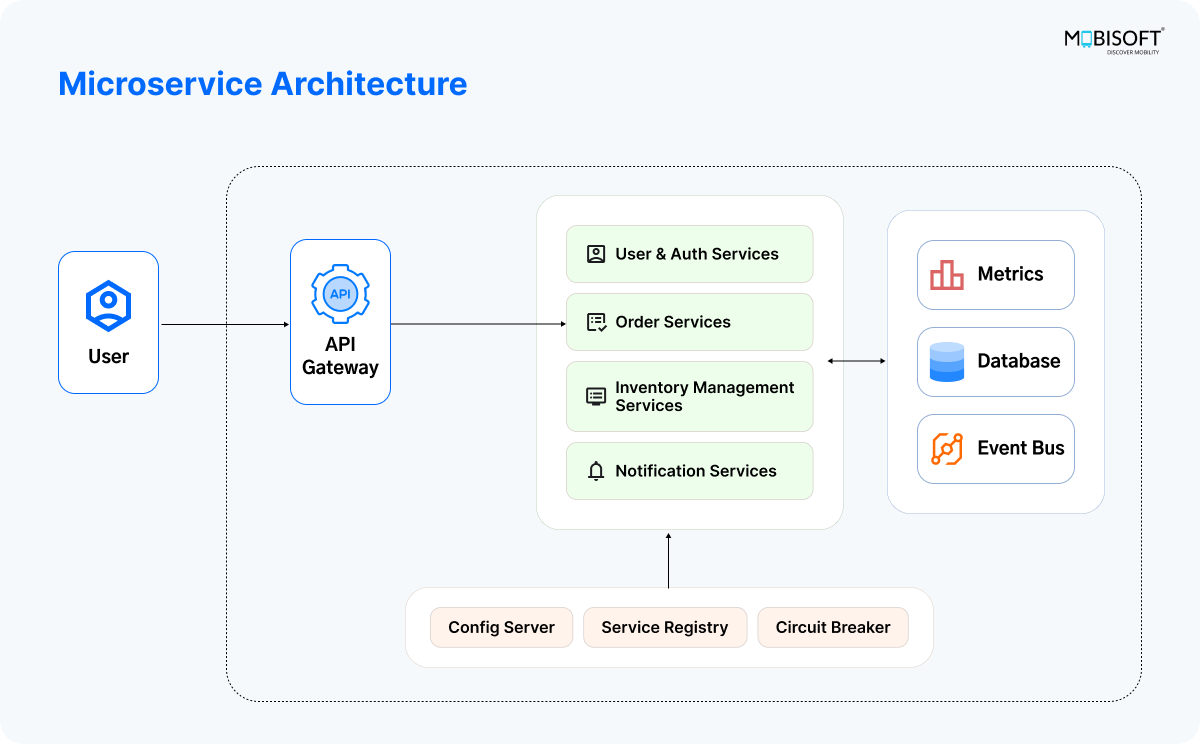Essential Principles of Spring Boot Microservices Architecture
 Mobisoft Infotech
Mobisoft Infotech
1. What are Microservices?
In today’s fast-paced digital world, applications need to be agile, scalable, and resilient. That’s where microservices come in. Think of them as small, independent building blocks that work together to create a larger applicationaviator game play demo. Each block focuses on a specific task, making the whole system more flexible and easier to manage. So, what exactly are microservices?
Simply put, they are small, independently deployable services that handle a specific business function. Imagine an online store: instead of one massive application, you might have separate microservices for managing user accounts, processing orders, handling payments, and tracking inventory. Each of these services can be developed, deployed, and scaled independently.

Characteristics That Define Microservices
Single Responsibility: Each microservice has one job and does it well. It focuses on a specific business capability. For example, a “User Service” handles everything related to user accounts, while a “Product Service” manages product information. This clear separation makes each service easier to understand, build, and maintain.
Loose Coupling: Microservices are designed to be independent of each other. This means changes to one service don’t require changes to others. If you update the “Product Service,” the “User Service” can continue running smoothly. This independence prevents cascading failures and simplifies deployments.
Autonomy: Teams have the freedom to choose the best tools and technologies for each microservice. One service might be built with Python, while another uses Java or Node.js. This flexibility allows teams to use the right tool for the job and encourages innovation.
Why Are So Many Companies Adopting Microservices? Here Are Some Compelling Reasons:
Scalability: Need more processing power for handling orders during a flash sale? You can scale just the “Order Processing” microservice without scaling the entire application. This efficient use of resources saves time and money.
Faster Time to Market: Because teams can work on and deploy services independently, updates and new features can be released much faster. This agility gives businesses a competitive edge.
Improved Fault Isolation: If one microservice fails, it doesn’t bring down the entire application. The other services can continue to function, minimizing disruption to users.
Easier Maintenance: Smaller codebases are easier to understand, test, and update. This makes maintenance less complex and improves overall code quality.
In essence, microservices architecture offers a powerful approach to building complex applications. By breaking down applications into smaller, manageable pieces, businesses can achieve greater agility, scalability, and resilience.
Read More:https://mobisoftinfotech.com/resources/blog/essential-principles-spring-boot-microservices
Subscribe to my newsletter
Read articles from Mobisoft Infotech directly inside your inbox. Subscribe to the newsletter, and don't miss out.
Written by

Mobisoft Infotech
Mobisoft Infotech
Mobisoft Infotech is a software product engineering company dedicated to providing value, quality, and lasting business expansion through digital innovation, change, and the adoption of technology. Our proficiency in digital technology encompasses Mobile, Cloud, DevOps, Web, IoT, AI, UI/UX, Testing, Robotic Process Automation, and various other digital transformation services, catering to companies across a wide range of industries. With more than ten years of experience in constructing digital solutions, offering consulting, and handling outsourcing, Mobisoft has assisted clients from over 30 countries in embracing digital transformation, capitalizing on market prospects, and attaining sustained outcomes.